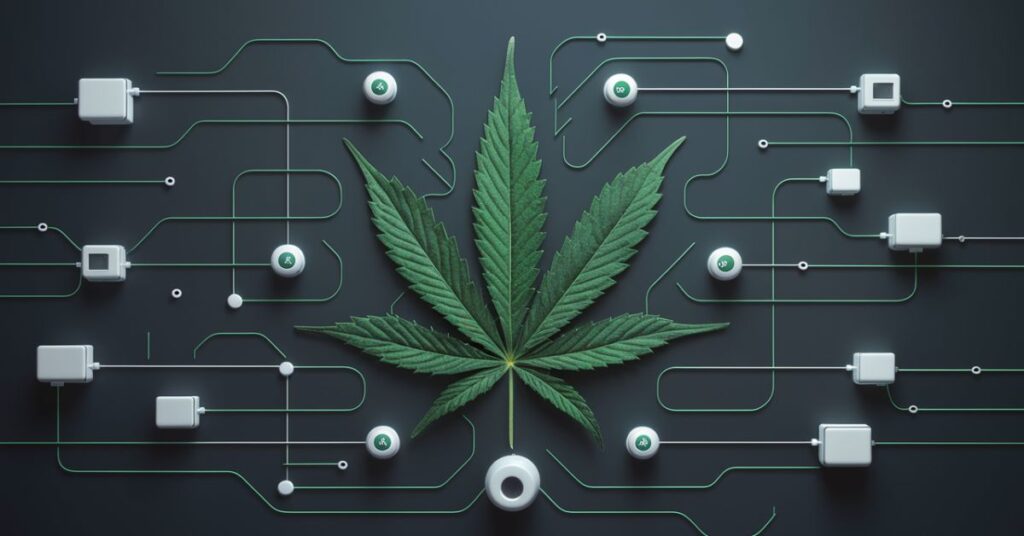The cannabis industry, like many others, is undergoing a technological transformation that promises to increase productivity, reduce costs, and improve yields. One of the most significant advances driving this change is the integration of the Internet of Things (IoT) into cannabis cultivation. By connecting devices, sensors, and systems, IoT provides growers with real-time data and automation capabilities that are revolutionizing the industry.
- Environmental Monitoring and Automation
One of the key benefits of IoT in cannabis cultivation is the ability to monitor environmental conditions in real-time. Sensors placed throughout the grow facility can measure variables such as temperature, humidity, CO2 levels, light levels, and soil moisture. Automated systems can make real-time adjustments to lighting, irrigation, and ventilation based on the data collected, ensuring optimal growing conditions for the plants. This approach aligns directly with the Good Agricultural and Collection Practices (GACP), which emphasize the importance of monitoring environmental conditions to ensure the quality and safety of medicinal cannabis.
- Traceability and Compliance
Traceability is a key issue in the cannabis industry, especially given the stringent regulatory environment in Europe. IoT can significantly improve traceability by providing a digital record of every step of the cultivation process. From seed to sale, every interaction with the plant can be recorded and monitored, creating a clear and immutable record. This aligns with EU-GMP standards, which require detailed documentation and batch traceability.
IoT systems can automatically generate reports and alerts, helping growers stay compliant and avoid costly fines or downtime. These systems offer an efficient way to manage Standard Operating Procedures (SOPs) and meet the requirements for Good Manufacturing Practices (GMP) in processing medicinal cannabis.
- Predictive Analytics and Risk Management
The integration of IoT with Artificial Intelligence (AI) and Machine Learning (ML) is another breakthrough in cannabis cultivation. IoT devices collect vast amounts of data over time, which can be analyzed using AI algorithms to identify patterns and predict outcomes. For example, by analyzing environmental data and plant responses, AI can predict optimal growing conditions, enabling growers to preemptively adjust their strategies. This not only increases yields but also helps in the early detection of potential problems, such as pest infestations or disease outbreaks. Such predictive models are particularly useful for meeting the Integrated Pest Management (IPM) requirements within GACP, which encourage proactive measures to maintain plant health.
- Sustainability and Energy Efficiency
Sustainability is becoming an increasingly important aspect of cannabis cultivation, and IoT can play a significant role in this area. IoT systems can optimize energy consumption by ensuring that lighting, heating, and cooling systems are only used when necessary. For example, smart lighting systems can adjust their intensity based on the amount of natural light available, reducing energy consumption. This approach aligns with the sustainability guidelines of GACP, which encourage the responsible use of resources and minimizing environmental impact. As the cannabis industry continues to grow, the adoption of energy-efficient technologies will be crucial to its long-term sustainability.
- Reporting and Data Validation
One of the most critical aspects of compliance in the cannabis industry is maintaining accurate and validated records throughout the cultivation and production process. IoT systems can facilitate this by ensuring that all data is automatically recorded and validated in real time, eliminating the risk of human error. Compliance with EU-GMP standards requires rigorous documentation, particularly for batch release, deviation reporting, and quality assurance audits. The ability to generate automated compliance reports and store them in immutable blockchain systems ensures that producers can meet the stringent audit requirements of EU regulatory bodies.
Conclusion
The integration of IoT into cannabis cultivation is transforming the industry, providing growers with the tools they need to optimize every aspect of their operations. From real-time environmental monitoring to automated irrigation and predictive analytics, IoT offers a range of benefits that can lead to higher yields, better product quality, and more efficient use of resources. Moreover, the enhanced traceability and compliance management offered by IoT systems help growers meet the stringent GACP and EU-GMP standards, ensuring that their operations remain both sustainable and compliant.
Book demo for your seed to sale software today






